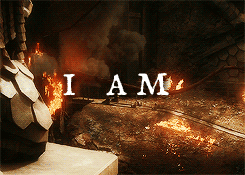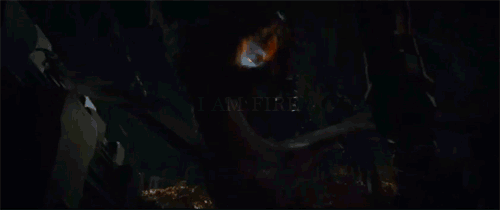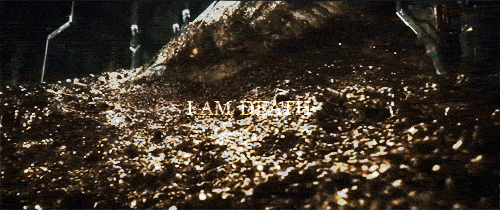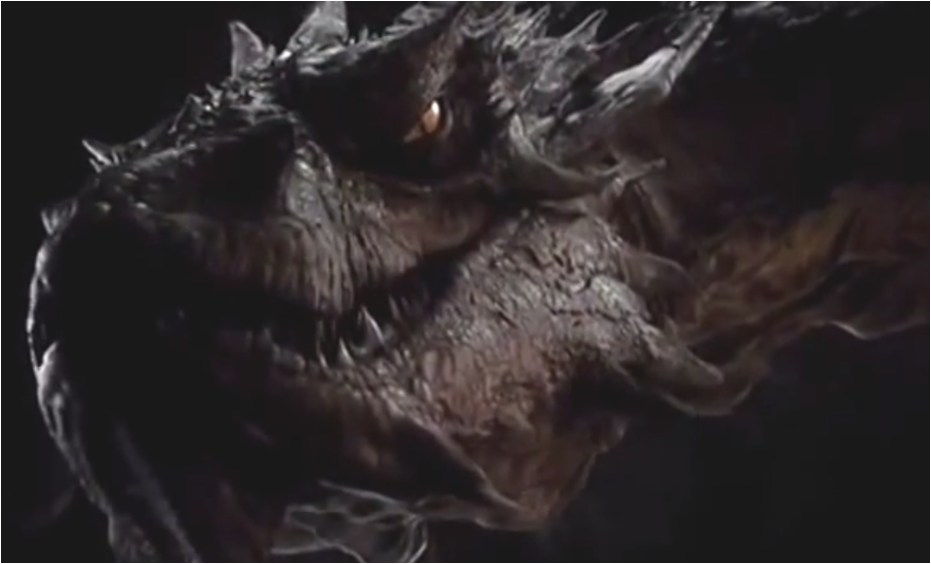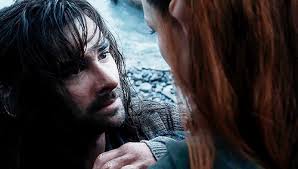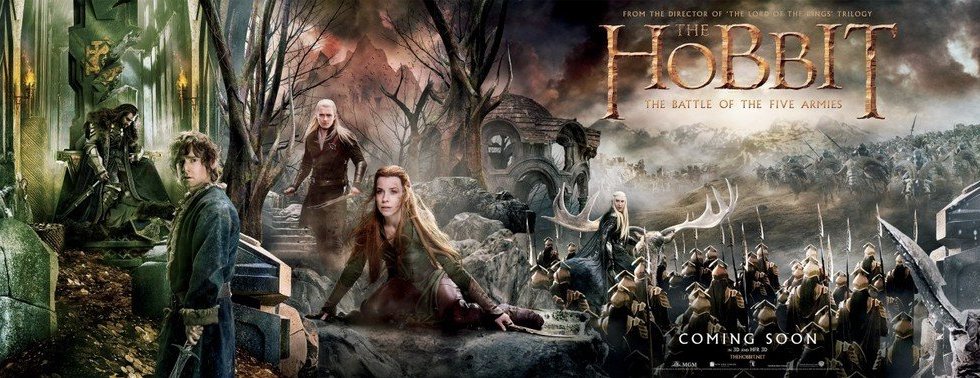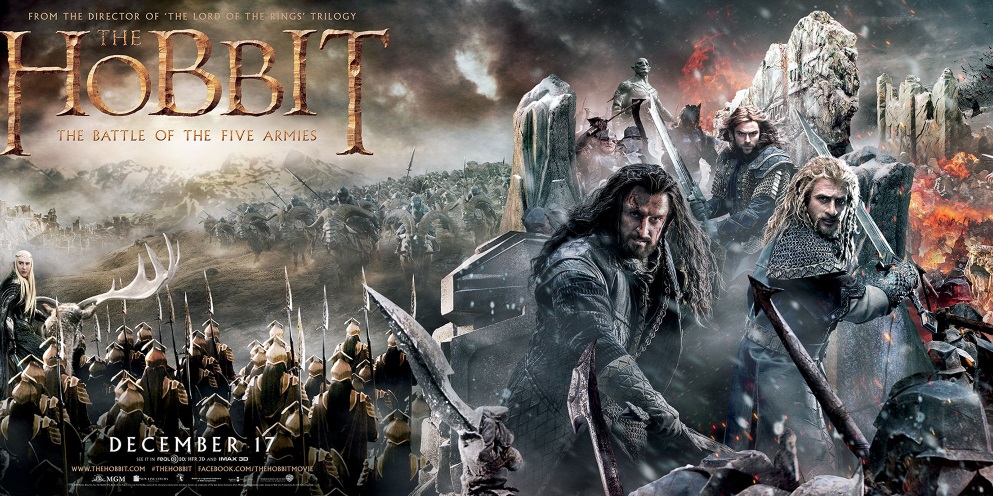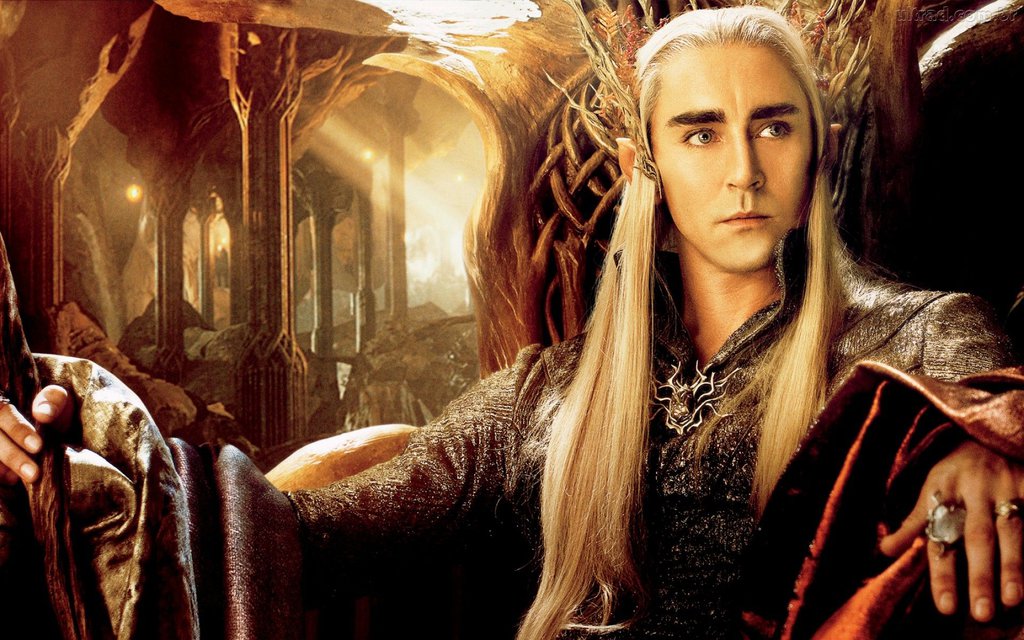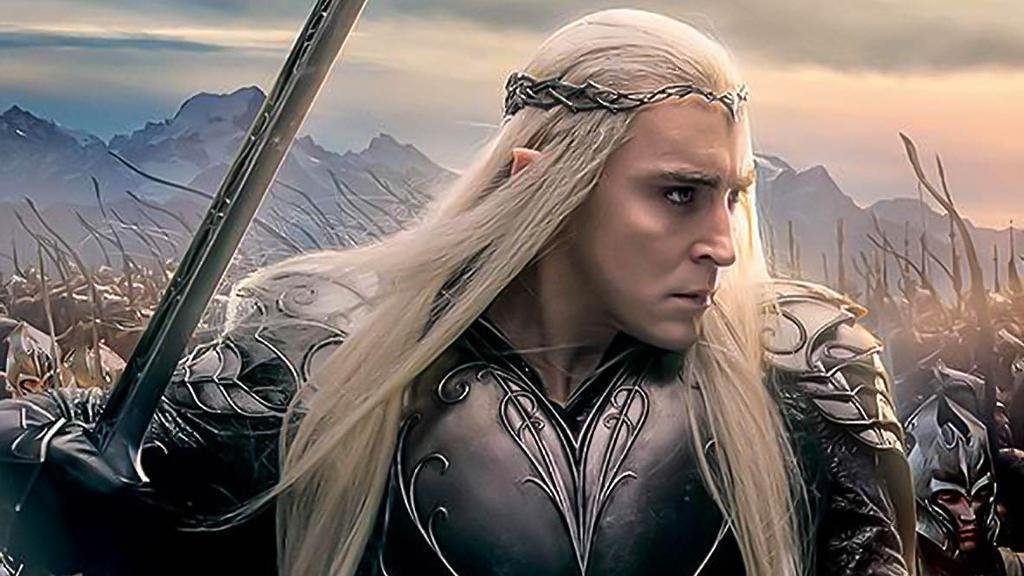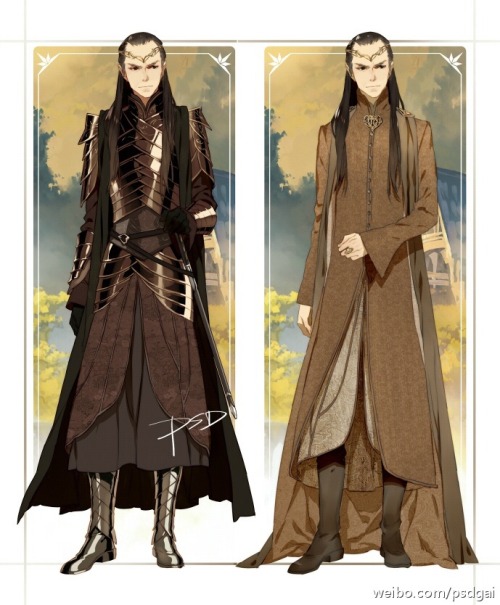Minus the gig with the Master's assistant being over-the-top in craziness (although I did crack up at several points), I honestly liked both the sets and the fight scenes - and yes, the Ringwraiths did feel a bit more quick during the fights like in a video game, but it was still cool. Seeing the hoods slowly raising their swords from the original LOTR Saga, I wasn't really wanting to see more of the same and appreciated a differing dynamic with actually showing the high-speed ghosts. I really liked seeing these Old World characters from the time of Morgoth (Sauron is one of his servants) express their superior power for once, as it concerns Galadriel who is awe-inspiring and powerful, Elrond with his fighting routine with the Nazgul and Saruman adding into things.
I also HIGHLY enjoyed seeing high elves as represented by the development of Thranduil, when he comes to reclaim his family heirlooms from the Lonely Mountain and his beautiful army lines up in front of the dwarves. And with the ways that the dwarves go to war, it was very beautiful to see how things line up:
But the political landscape is what stood out to me on the issue. As one pe
rson said best:
Biblical Allusions Speaking of second-comings, I’ve said elsewhere, that I believe the 12 dwarves are metaphors for the Diaspora Twelve Tribes of Israel (see here Are The Hobbit Dwarves Jewish? and here (3) The Hobbit’s 13 Dwarves). It has long been argued back and forth about the allegorical nature of LoTR. As evidence for this claim there is: a massive shofar blown at the end and the dwarves ride rams, so its all Passover and the festival of the Scapegoat. Lust for gold, seeking a new home, a small people but loyal and hardy, fighting a “Red Dragon”…it’s all here (see The Real Red Smaug. Christmas Genocide in Iraq. I Attend an Arabic Service). There is also (the coincidence?) that Hobbit 3 is released during Hanukkah season.
You have to remember that Tolkien wrote Hobbit about a decade before the Jews of the Holocaust reclaimed a homeland (modern Israel) but during the political period of the Balfour Declaration and Churchill’s advocacy for Jews. I think Tolkien was conscious of this when crafting Thorin’s quest for his “little people.”
Also, As
said there:

“One day I’ll remember; remember everything that happened: the good , the bad, those who survived…and those that did not.”
While “Battle” isn’t without its share of issues, it manages to outdo its predecessors in both thematic depth and stylistic execution, and ultimately emerges as the prefatory chapter “LOTR” deserved all along.
In a breathtaking opening sequence that really should’ve served as a climax for “Desolation,” the mighty dragon Smaug is slain. The Dwarven adventurers – and lords in exile – successfully retake their home kingdom and its vast hoard of treasure. It soon becomes clear, however, that Dwarf king Thorin (Richard Armitage) has no intention of allocating some of the treasure to pay for the nearby townsfolk’s property destroyed by Smaug. To make matters worse, an army of woodland Elves soon appears on Thorin’s doorstep, demanding the return of historical treasures stolen long ago and kept within the Mountain.
It is through this leadup to the eponymous conflict – and particularly through the resulting exploration of the dynamics of race, history, and territory – that “Battle” offers a genuinely unique contribution to the fantasy-cinema landscape. Many fantasy worlds suggest racial conflict between sentient species (the original LOTR trilogy hinted at Elf/Dwarf animosity between side characters Legolas and Gimli, for instance). In most cases, however, these themes are only explored on the most superficial of levels (“I never thought I’d die fighting side by side with an Elf,” grumbles Gimli in a dark LOTR moment. “What about side-by-side with a friend?” returns Legolas). Themes of persistent tension between groups, and not individuals, typically go unaddressed or serve simply as worldbuilding background.
“Battle” boldly suggests that ethnocultural identity is, to some extent, contingent upon the physicality of place. Questions of land and property ownership surrounding the past Dwarven diaspora, heirlooms belonging to a longstanding heritage, and a generalized racial “right of return” (as offered by Thorin to his Dwarf kinfolk) echo real-world tensions between cultural groups. The concept of “home” has been a long-running (and heretofore fairly uninventive) prequel series theme; here, it expands from simply a longing-for-hearth into a sober meditation on the core values of nation-states (a term used here in the technical sense, referring to a group whose ethnic identity is contiguous with its political borders). In the end, “Battle” provides a surprisingly mature, nuanced exploration of group-based cultural politics that never lapses into demonizing any of its participants.
And then, of course, the battle begins: an incipient three-way conflict between Elves, Dwarves, and Men quickly turns into a “good guys vs. goblins” tableau in the tradition of LOTR. It was grand stuff ten years ago, and it remains so today: for all his faults, Jackson knows how to stage a breathtaking battle scene, and the massive conflict does not disappoint. It lacks the emotional gravitas and world-shattering stakes of LOTR, but that doesn’t change the fact that “Battle” is frequently very exciting and very entertaining. Howard Shore’s booming score is also a great highlight.
The egregious vices of the previous “Hobbit” films are not absent here. The motion-capture Orcs and trolls still look awful, a far cry from the menacing makeup-and-prosthetics creations of Jackson’s earlier trilogy. The dialogue remains somewhat wince-inducing (especially in the context of the ill-advised romance between handsome Dwarf Kili and Elven archer Tauriel), and it’s still impossible to shake the feeling that this should never have been stretched into three films. Jackson’s recent tendency to substitute comedic pratfalls for real drama remains omnipresent, culminating in a ludicrously overwrought display of Elven acrobatics.
But when the Elf arrows start flying and the ancient Dwarven lords charge across the bloodied landscape, hacking through legions of savage monsters, it’s impossible to not be swept away in the sheer Wagnerian bombast of it all. Honestly, what Middle-earth devotee doesn’t want to watch the White Council defy a circle of ghostly Ringwraiths, or see Galadriel channel her immortal power to banish Sauron from his fortress stronghold? Jackson throws up screen after screen of pure grandiosity, sending pulse rates skyrocketing whether or not he’s earned any serious emotional payoff. By this point in the franchise, I’ve come to terms with the realization that “The Hobbit” will never outdo LOTR in any meaningful sense; having acknowledged that, it’s entirely possible to appreciate this third installment for what it is…and flawed though it may be, “Battle” is a ride to remember.








